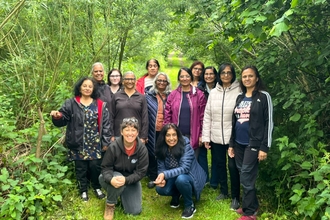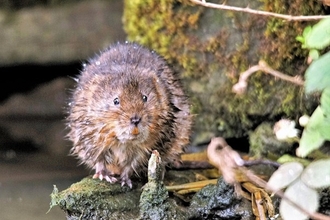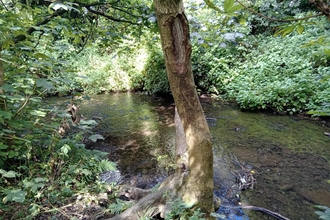Involving a Local MP in Hands-On Citizen Science in Warwickshire
We all really enjoyed doing this survey but were left with a feeling that more must be done to protect our precious waterways. Seeing a few fish does not mean all is well, we must literally delve deeper to find out more; regular monitoring is a way we can do that.
Lee Copplestone, August 2025
Wem Brook in Attleborough, Nuneaton, is home to water voles, the UK’s most endangered mammal. This cute creature is perhaps best known as Ratty (water voles are not actually rats but that's another story!) in the children’s story, Wind in the Willows. But this story is about looking for even smaller things that live in the water, tiny water insects known as Aquatic Invertebrates which are key to understanding the health of our brooks and rivers.
In July, Attleborough Wildlife Watchers met with their MP, Jodie Gosling, at her surgery to tell her all about their concerns for nature and wildlife. Jodie has a keen interest in nature so she asked if she may come along to their next survey event. The following month, she joined Attleborough Wildlife Watchers for a kick-survey, so called because it involves kicking at the bottom of the brook to disturb water insects which are then caught in a net, identified and counted.
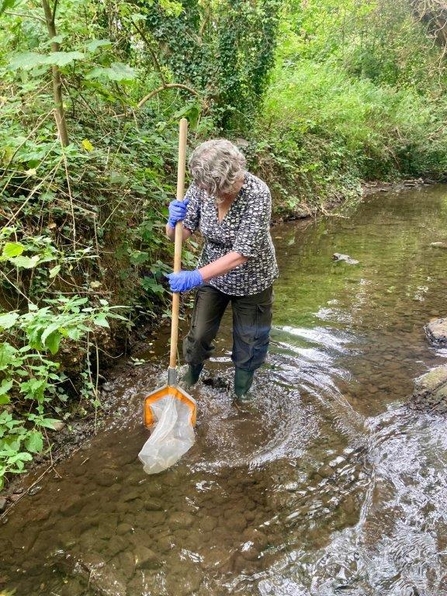
Warwickshire Wildlife Trust
So why sweat over the small stuff? It’s important because the amount and variety of insects living in the brook is a good indicator of the water quality. If you find lots of insects of different types this means good quality water, if there are none it’s bad, simple!
Jodie was keen to take part in the action, so after a quick demonstration of the survey technique by Wildlife Watcher, Jane Andrew, she pulled on her Wellies and paddled out into the shallow water of the brook. She kicked her feet in front of the net for exactly one minute to collect insects as well as some silt and stones. Once safely back on shore, she emptied the net into a tray of water so we could more easily see what she had “caught”.
Lee Copplestone, Warwickshire Wildlife Trust Community Organiser, explains the next step, “Our next task was to identify and count all the insects. This is not so simple as there are many similar types including some we had not seen before. We found a few freshwater shrimps darting around, a large motionless damselfly nymph, and a rather restless caseless caddisfly as well as a couple of small minnows which is good news for kingfishers in the area”.
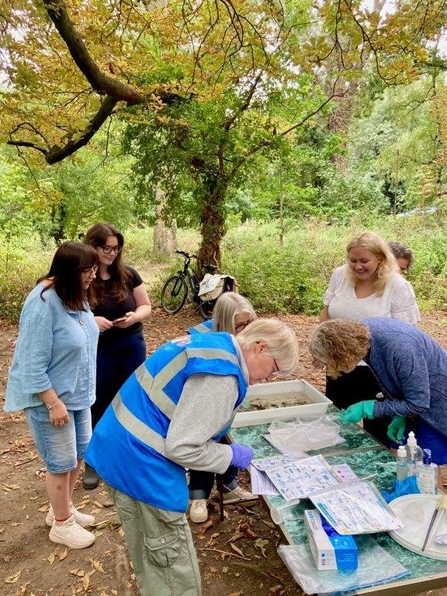
Warwickshire Wildlife Trust
Afterwards, the Wildlife Watchers did a chemical test to measure the phosphates and nitrates in the water which both showed moderate levels. They also checked the cloudiness of the water, but even crystal-clear water could be hiding all sorts of nasty pollutants, and they only have resources to test for a few of the chemicals which taint this beautiful brook.
As we suspected, the survey and chemical tests showed that the brook is not in very good condition. Lee sums it up: “We all really enjoyed doing this survey but were left with a feeling that more must be done to protect our precious waterways. Seeing a few fish does not mean all is well, we must literally delve deeper to find out more; regular monitoring is a way we can do that.”
Attleborough Wildlife Watchers hope that by working closely alongside their local MP, they can take steps to monitor and protect their local brooks and rivers and the amazing wildlife that lives in and around the water.
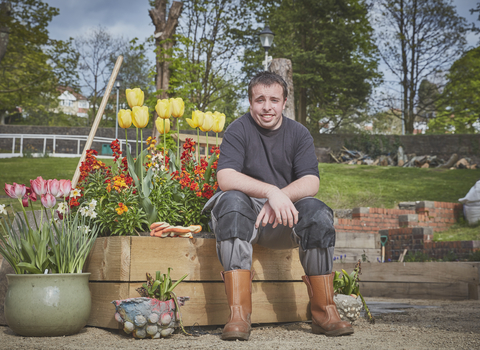

The Wildlife Trusts
Have you been part of a community nature project?
We'd love to hear from you! Your experiences will be shared right here on the Community Hub and will inspire others to take action in their own neighbourhoods.
Except where noted and excluding images, company and organisation logos, this work is shared under a Creative Commons Attribution 4.0 (CC BY 4.0) Licence.
Please attribute as: “Nextdoor Nature (2022-2024) by The Wildlife Trusts funded by The National Lottery Heritage Fund, licensed under CC BY 40”

